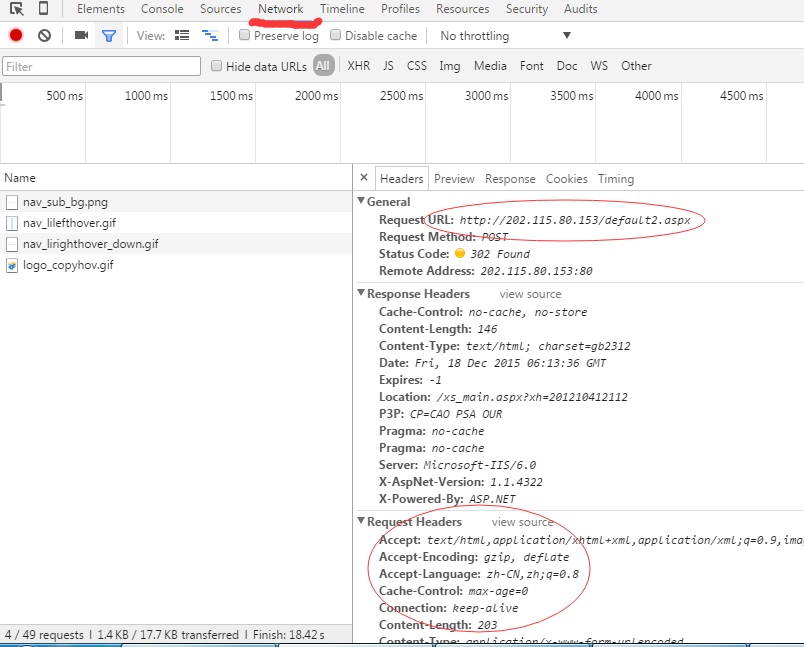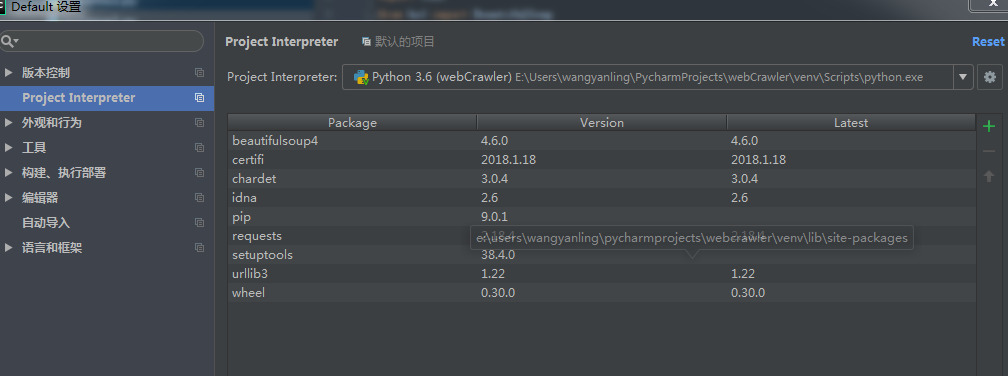Python 爬虫之Beautiful Soup模块使用指南
爬取网页的流程一般如下:
- 选着要爬的网址(url)
- 使用 python 登录上这个网址(urlopen、requests 等)
- 读取网页信息(read() 出来)
- 将读取的信息放入 BeautifulSoup
- 使用 BeautifulSoup 选取 tag 信息等
可以看到,页面的获取其实不难,难的是数据的筛选,即如何获取到自己想要的数据。本文就带大家学习下 BeautifulSoup 的使用。
BeautifulSoup 官网介绍如下:
Beautiful Soup 是一个可以从 HTML 或 XML 文件中提取数据的 Python 库,它能够通过你喜欢的转换器实现惯用的文档导航、查找、修改文档的方式,能够帮你节省数小时甚至数天的工作时间。
1 安装
可以利用 pip 直接安装:
$ pip install beautifulsoup4
BeautifulSoup 不仅支持 HTML 解析器,还支持一些第三方的解析器,如 lxml,XML,html5lib 但是需要安装相应的库。如果我们不安装,则 Python 会使用 Python 默认的解析器,其中 lxml 解析器更加强大,速度更快,推荐安装。
$ pip install html5lib $ pip install lxml
2 BeautifulSoup 的简单使用
首先我们先新建一个字符串,后面就以它来演示 BeautifulSoup 的使用。
html_doc = """ <html><head><title>The Dormouse's story</title></head> <body> <p class="title"><b>The Dormouse's story</b></p> <p class="story">Once upon a time there were three little sisters; and their names were <a href="http://example.com/elsie" rel="external nofollow" rel="external nofollow" rel="external nofollow" rel="external nofollow" rel="external nofollow" rel="external nofollow" rel="external nofollow" rel="external nofollow" rel="external nofollow" rel="external nofollow" class="sister" id="link1">Elsie</a>, <a href="http://example.com/lacie" rel="external nofollow" rel="external nofollow" rel="external nofollow" rel="external nofollow" class="sister" id="link2">Lacie</a> and <a href="http://example.com/tillie" rel="external nofollow" rel="external nofollow" rel="external nofollow" rel="external nofollow" class="sister" id="link3">Tillie</a>; and they lived at the bottom of a well.</p> <p class="story">...</p> """
使用 BeautifulSoup 解析这段代码,能够得到一个 BeautifulSoup 的对象,并能按照标准的缩进格式的结构输出:
>>> from bs4 import BeautifulSoup >>> soup = BeautifulSoup(html_doc, "lxml") >>> print(soup.prettify())
篇幅有限,输出结果这里不再展示。
另外,这里展示下几个简单的浏览结构化数据的方法:
>>> soup.title
<title>The Dormouse's story</title>
>>> soup.title.name
'title'
>>> soup.title.string
"The Dormouse's story"
>>> soup.p['class']
['title']
>>> soup.a
<a class="sister" href="http://example.com/elsie" rel="external nofollow" rel="external nofollow" rel="external nofollow" rel="external nofollow" rel="external nofollow" rel="external nofollow" rel="external nofollow" rel="external nofollow" rel="external nofollow" rel="external nofollow" id="link1">Elsie</a>
>>> soup.find_all('a')
[<a class="sister" href="http://example.com/elsie" rel="external nofollow" rel="external nofollow" rel="external nofollow" rel="external nofollow" rel="external nofollow" rel="external nofollow" rel="external nofollow" rel="external nofollow" rel="external nofollow" rel="external nofollow" id="link1">Elsie</a>, <a class="sister" href="http://example.com/lacie" rel="external nofollow" rel="external nofollow" rel="external nofollow" rel="external nofollow" id="link2">Lacie</a>, <a class="sister" href="http://example.com/tillie" rel="external nofollow" rel="external nofollow" rel="external nofollow" rel="external nofollow" id="link3">Tillie</a>]
>>> soup.find(id='link1')
<a class="sister" href="http://example.com/elsie" rel="external nofollow" rel="external nofollow" rel="external nofollow" rel="external nofollow" rel="external nofollow" rel="external nofollow" rel="external nofollow" rel="external nofollow" rel="external nofollow" rel="external nofollow" id="link1">Elsie</a>
3 对象的种类
Beautiful Soup 将复杂 HTML 文档转换成一个复杂的树形结构,每个节点都是 Python 对象,所有对象可以归纳为 4 种: Tag、NavigableString、BeautifulSoup、Comment 。
3.1 Tag
Tag通俗点讲就是 HTML 中的一个个标签,像上面的 div,p,例如:
<title>The Dormouse's story</title> <a class="sister" href="http://example.com/elsie" rel="external nofollow" rel="external nofollow" rel="external nofollow" rel="external nofollow" rel="external nofollow" rel="external nofollow" rel="external nofollow" rel="external nofollow" rel="external nofollow" rel="external nofollow" id="link1">Elsie</a>
可以利用 soup 加标签名轻松地获取这些标签的内容。
>>> print(soup.p) <p class="title"><b>The Dormouse's story</b></p> >>> print(soup.title) <title>The Dormouse's story</title>
不过有一点是,它查找的是在所有内容中的第一个符合要求的标签,如果要查询所有的标签,我们在后面进行介绍。
每个 Tag 有两个重要的属性 name 和 attrs,name 指标签的名字或者 tag 本身的 name,attrs 通常指一个标签的 class。
>>> print(soup.p.name)
p
>>> print(soup.p.attrs)
{'class': ['title']}
3.2 NavigableString
NavigableString:获取标签内部的文字,如,soup.p.string。
>>> print(soup.p.string) The Dormouse's story
3.3 BeautifulSoup
BeautifulSoup:表示一个文档的全部内容。大部分时候,可以把它当作 Tag 对象,是一个特殊的 Tag。
3.4 Comment
Comment:Comment 对象是一个特殊类型的 NavigableString 对象,其输出的内容不包括注释符号,但是如果不好好处理它,可能会对我们的文本处理造成意想不到的麻烦。
>>> markup = "<b><!--Hey, buddy. Want to buy a used parser?--></b>" >>> soup = BeautifulSoup(markup) >>> comment = soup.b.string >>> print(comment) Hey, buddy. Want to buy a used parser? >>> type(comment) <class 'bs4.element.Comment'>
b 标签里的内容实际上是注释,但是如果我们利用 .string 来输出它的内容,我们发现它已经把注释符号去掉了,所以这可能会给我们带来不必要的麻烦。
这时候我们可以先判断了它的类型,是否为 bs4.element.Comment 类型,然后再进行其他操作,如打印输出等。
4 搜索文档树
BeautifulSoup 主要用来遍历子节点及子节点的属性,并提供了很多方法,比如获取 子节点、父节点、兄弟节点等,但通过实践来看,这些方法用到的并不多。我们主要用到的是从文档树中搜索出我们的目标。
通过点取属性的方式只能获得当前文档中的第一个 tag,例如,soup.li。如果想要得到所有的<li> 标签,就需要用到 find_all(),find_all() 方法搜索当前 tag 的所有 tag 子节点,并判断是否符合过滤器的条件 find_all() 所接受的参数如下:
find_all( name , attrs , recursive , text , **kwargs )
4.1 按 name 搜索
可以查找所有名字为 name 的 tag,字符串对象会被自动忽略掉。
>>> soup.find_all('b')
[<b>The Dormouse's story</b>]
>>> soup.find_all('a')
[<a class="sister" href="http://example.com/elsie" rel="external nofollow" rel="external nofollow" rel="external nofollow" rel="external nofollow" rel="external nofollow" rel="external nofollow" rel="external nofollow" rel="external nofollow" rel="external nofollow" rel="external nofollow" id="link1">Elsie</a>, <a class="sister" href="http://example.com/lacie" rel="external nofollow" rel="external nofollow" rel="external nofollow" rel="external nofollow" id="link2">Lacie</a>, <a class="sister" href="http://example.com/tillie" rel="external nofollow" rel="external nofollow" rel="external nofollow" rel="external nofollow" id="link3">Tillie</a>]
4.2 按 id 搜索
如果文档树中包含一个名字为 id 的参数,其实在搜索时会把该参数当作指定名字 tag 的属性来搜索:
>>> soup.find_all(id='link1') [<a class="sister" href="http://example.com/elsie" rel="external nofollow" rel="external nofollow" rel="external nofollow" rel="external nofollow" rel="external nofollow" rel="external nofollow" rel="external nofollow" rel="external nofollow" rel="external nofollow" rel="external nofollow" id="link1">Elsie</a>]
4.3 按 attr 搜索
有些 tag 属性在搜索不能使用,比如 HTML5 中的 data-* 属性,但是可以通过 find_all() 方法的 attrs 参数定义一个字典参数来搜索包含特殊属性的 tag。
其实 id 也是一个 attr:
>>> soup.find_all(attrs={'id':'link1'})
[<a class="sister" href="http://example.com/elsie" rel="external nofollow" rel="external nofollow" rel="external nofollow" rel="external nofollow" rel="external nofollow" rel="external nofollow" rel="external nofollow" rel="external nofollow" rel="external nofollow" rel="external nofollow" id="link1">Elsie</a>]
4.4 按 CSS 搜索
按照 CSS 类名搜索 tag 的功能非常实用,但标识 CSS 类名的关键字 class 在 Python 中是保留字,使用 class 做参数会导致语法错误。因此从 Beautiful Soup 的 4.1.1 版本开始,可以通过 class_ 参数搜索有指定 CSS 类名的 tag:
>>> soup.find_all(class_='sister') [<a class="sister" href="http://example.com/elsie" rel="external nofollow" rel="external nofollow" rel="external nofollow" rel="external nofollow" rel="external nofollow" rel="external nofollow" rel="external nofollow" rel="external nofollow" rel="external nofollow" rel="external nofollow" id="link1">Elsie</a>, <a class="sister" href="http://example.com/lacie" rel="external nofollow" rel="external nofollow" rel="external nofollow" rel="external nofollow" id="link2">Lacie</a>, <a class="sister" href="http://example.com/tillie" rel="external nofollow" rel="external nofollow" rel="external nofollow" rel="external nofollow" id="link3">Tillie</a>]
4.5 string 参数
通过 string 参数可以搜搜文档中的字符串内容。与 name 参数的可选值一样,string 参数接受字符串、正则表达式、列表、True。
>>> soup.find_all('a', string='Elsie')
[<a class="sister" href="http://example.com/elsie" rel="external nofollow" rel="external nofollow" rel="external nofollow" rel="external nofollow" rel="external nofollow" rel="external nofollow" rel="external nofollow" rel="external nofollow" rel="external nofollow" rel="external nofollow" id="link1">Elsie</a>]
4.6 recursive 参数
调用 tag 的 find_all() 方法时,Beautiful Soup 会检索当前 tag 的所有子孙节点,如果只想搜索 tag 的直接子节点,可以使用参数 recursive=False。
4.6 find() 方法
它与 find_all() 方法唯一的区别是 find_all() 方法的返回结果是值包含一个元素的列表,而 find() 方法只返回第一个匹配的结果。
4.7 get_text() 方法
如果只想得到 tag 中包含的文本内容,那么可以用 get_text() 方法,这个方法获取到 tag 中包含的所有文本内容。
>>> soup.find_all('a', string='Elsie')[0].get_text()
'Elsie'
>>> soup.find_all('a', string='Elsie')[0].string
'Elsie'
至此,Beautiful Soup 的常用使用方法已讲完,若果想了解更多内容,建议看下官方文档:https://www.crummy.com/software/BeautifulSoup/bs4/doc.zh/。
总结
本篇主要带大家了解了 Beautiful Soup,结合一些小例子,相信大家对 Beautiful Soup 已不再陌生,下回会带大家结合 Beautiful Soup 进行爬虫的实战,欢迎继续关注!
以上就是本文的全部内容,希望对大家的学习有所帮助,也希望大家多多支持【听图阁-专注于Python设计】。

